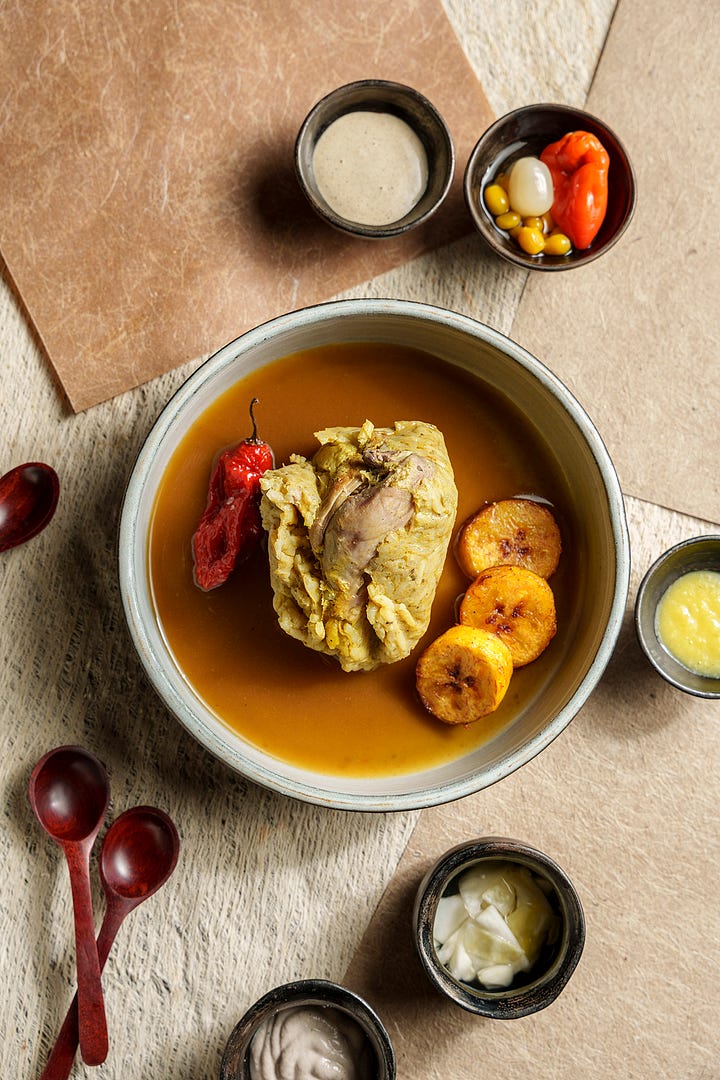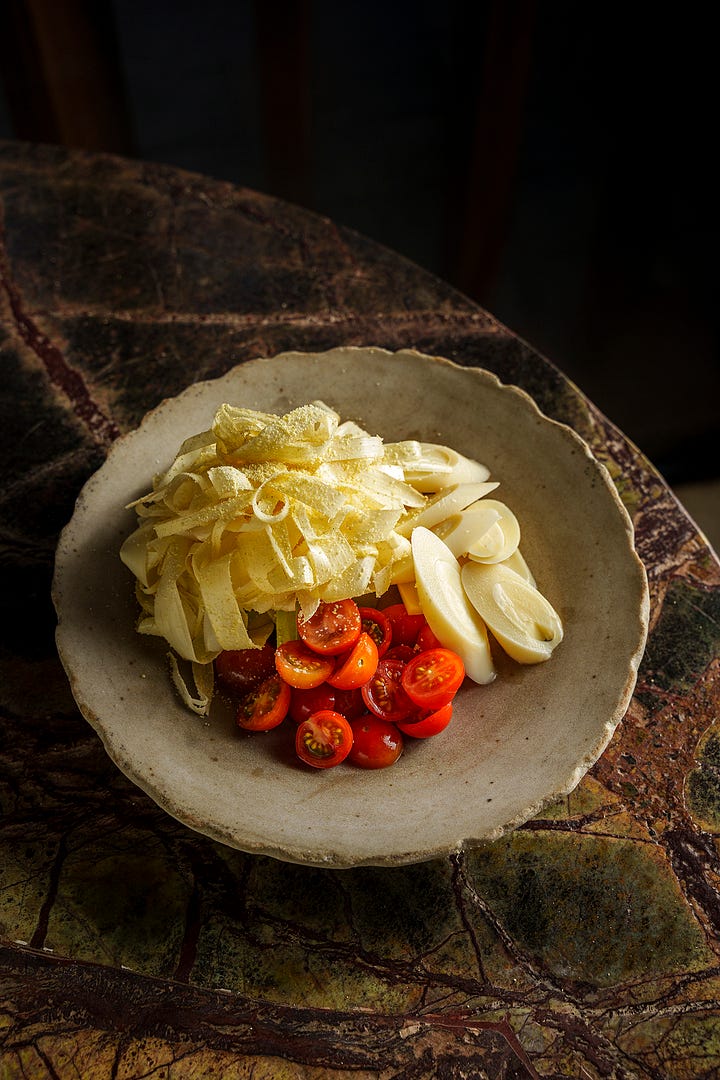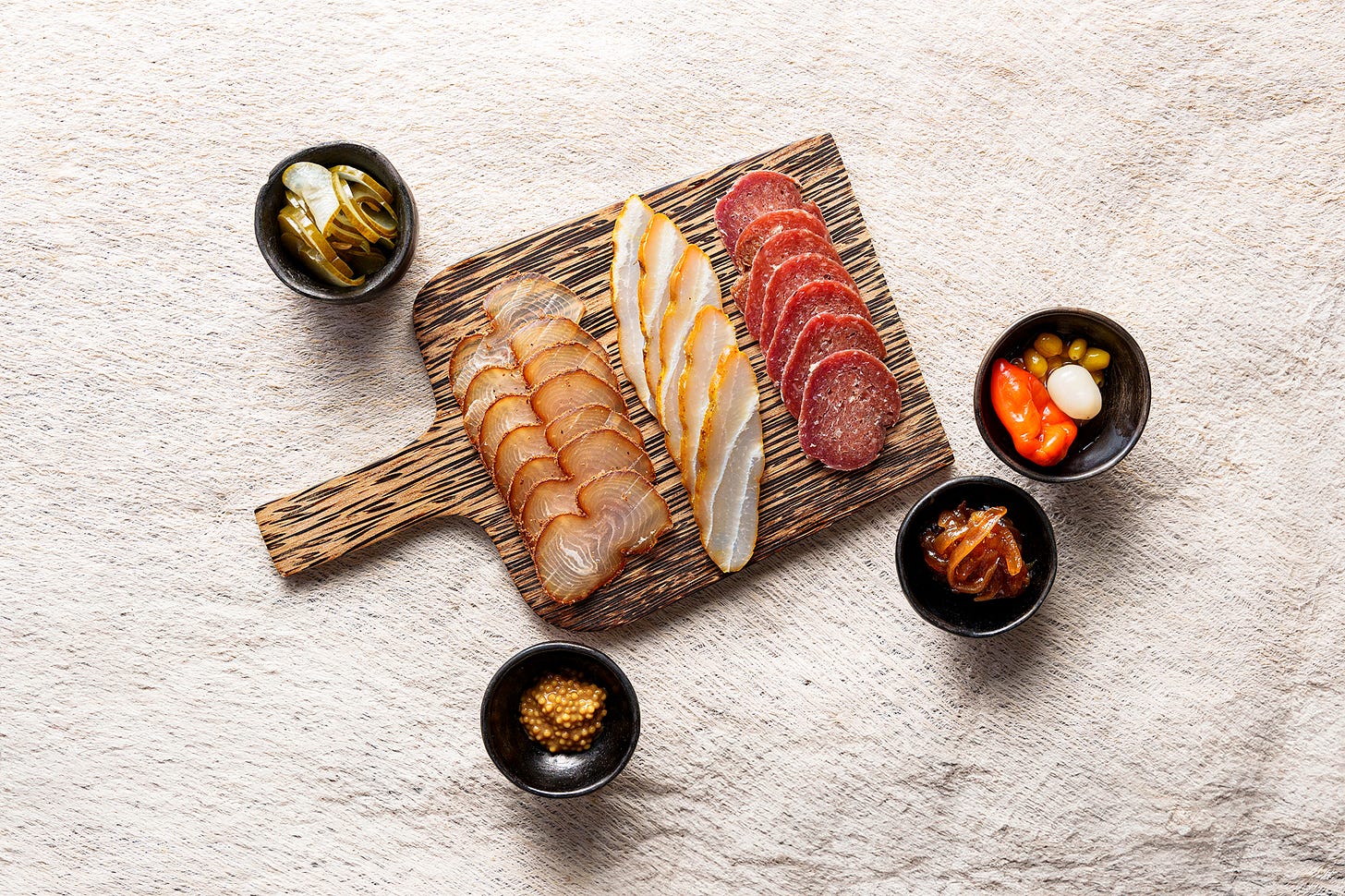The Flavors of the Amazon in a Concrete Jungle
The opening of Aldo Yaranga Chumpitazi’s Awa in Lima.


Regional Amazonian flavors aren’t limited to brief appearances on fine dining menus in Lima. While they took a bit of a hit when the two locations of the groundbreaking restaurant ámaZ closed during the pandemic, all you had to do was walk through the Mercado de Magdalena to find a dozen or so stalls selling juanes and cocona. A welcome, recent trend, rather than Limeño chefs using Amazonian products, are an influx of chefs that have either lived or worked extensively in the Amazon opening restaurants in the city. Among them, is Aldo Yaranga Chumpitazi’s recently opened Awa.
You may have seen my writing about Yaranga from his years working with La Patarashca, the iconic restaurant of the Reátegui family in Tarapoto, or maybe even when he was working with Pedro Miguel Schiaffino at Malabar for four years prior to that. Awa, in the Miraflores building that once housed Statera, is his first solo project. It’s seasonal Amazonian restaurant with a nice bar program that builds off his years of work in Tarapoto. Unlike Patarashca, which rightly uses founding chef Elia García de Reátegui’s takes on regional recipes, Awa is less tied to tradition.
Awa’s menu is showcase of the decade of work Yaranga has put in the region. His knowledge of Amazonian fish like paiche comes through in its many forms here, such as smoked paiche ham, paiche chorizo and paiche pastrami, which he helped develop at Mijano Amazon Lab inside Patarashca alongside Jules Trenard. The garums made from paiche and river clams being made there will likely appear on the menu too.
Elsewhere on the menu, you’ll find tartar made from the fish gamitana and mustard seasoned with tucupi. The only Amazonian restaurant I can vaguely compare it to in Lima was ámaZ, though because it’s not nearly as high volume, he’s able to access less common ingredients like pispina beans and vanilla from Awajún communities.
“We need Amazonian cuisine in the cities of South America to feel part of it, to know the importance it represents for the balance of the biodiversity of our country,” Yaranga told me. “History teaches us that, if we do not give it the value of what it really represents, we are turning our backs on those who feed us with life, just as the Andes and the coast must have the same transcendence. We need Amazonian cuisine in the cities to bring the products closer and communicate all the work of the communities of fishermen, hunters and farmers, as well as responsible entrepreneurs who ensure that these resources are sustainable over time, such as the fishermen in Pacaya Samiria or the aquaculture producers of San Martin.”
Keep reading with a 7-day free trial
Subscribe to New Worlder to keep reading this post and get 7 days of free access to the full post archives.




